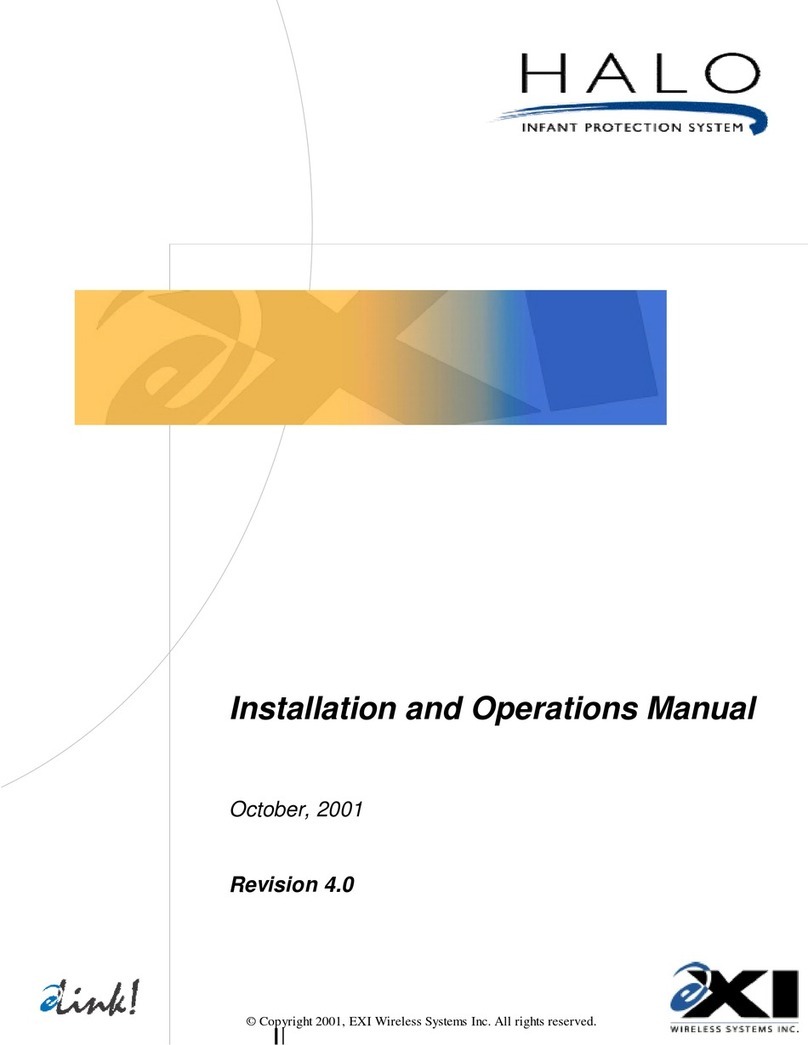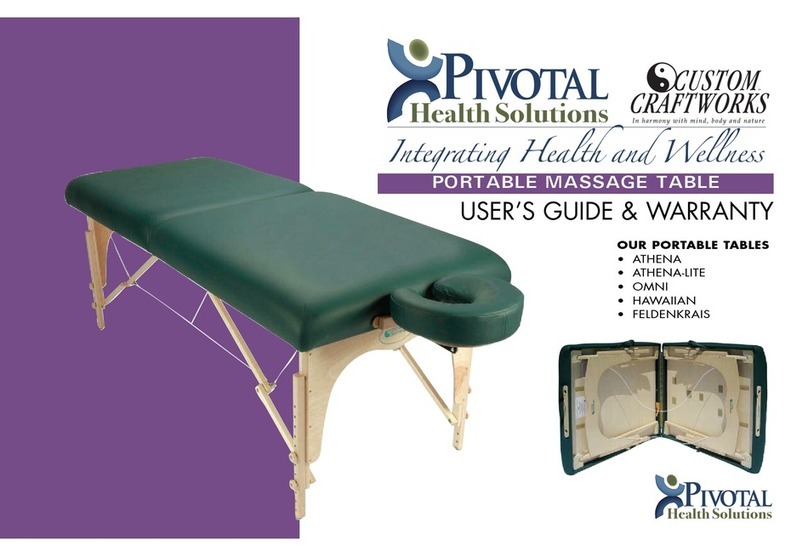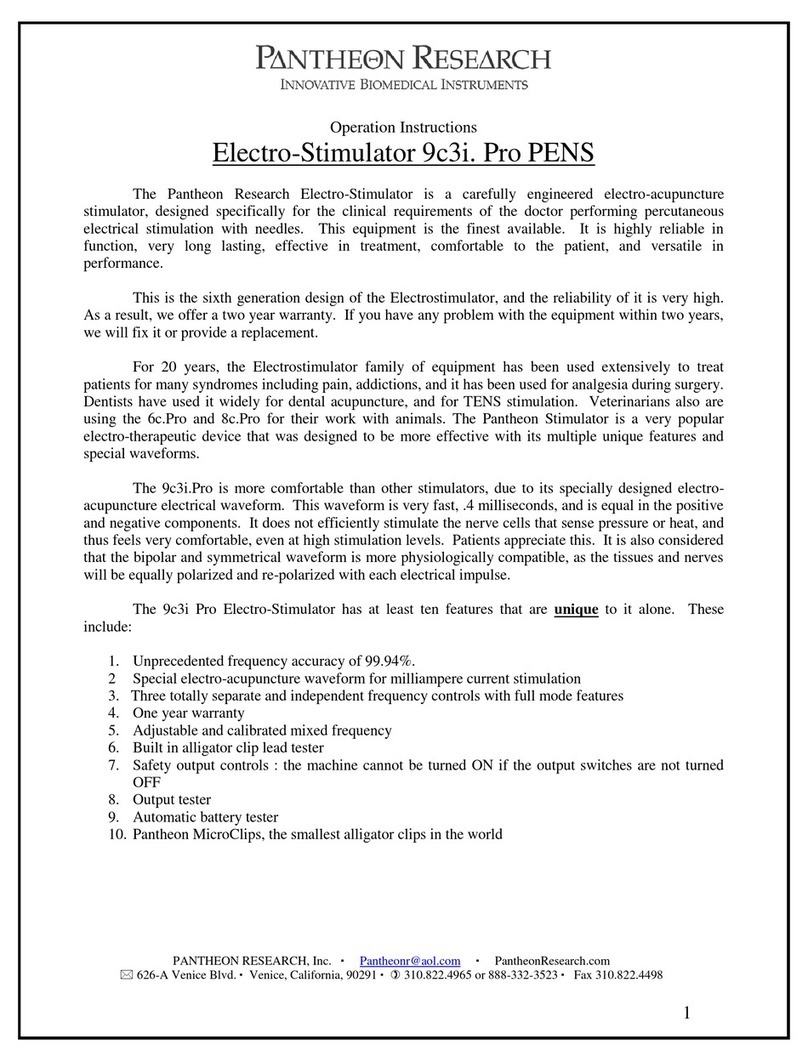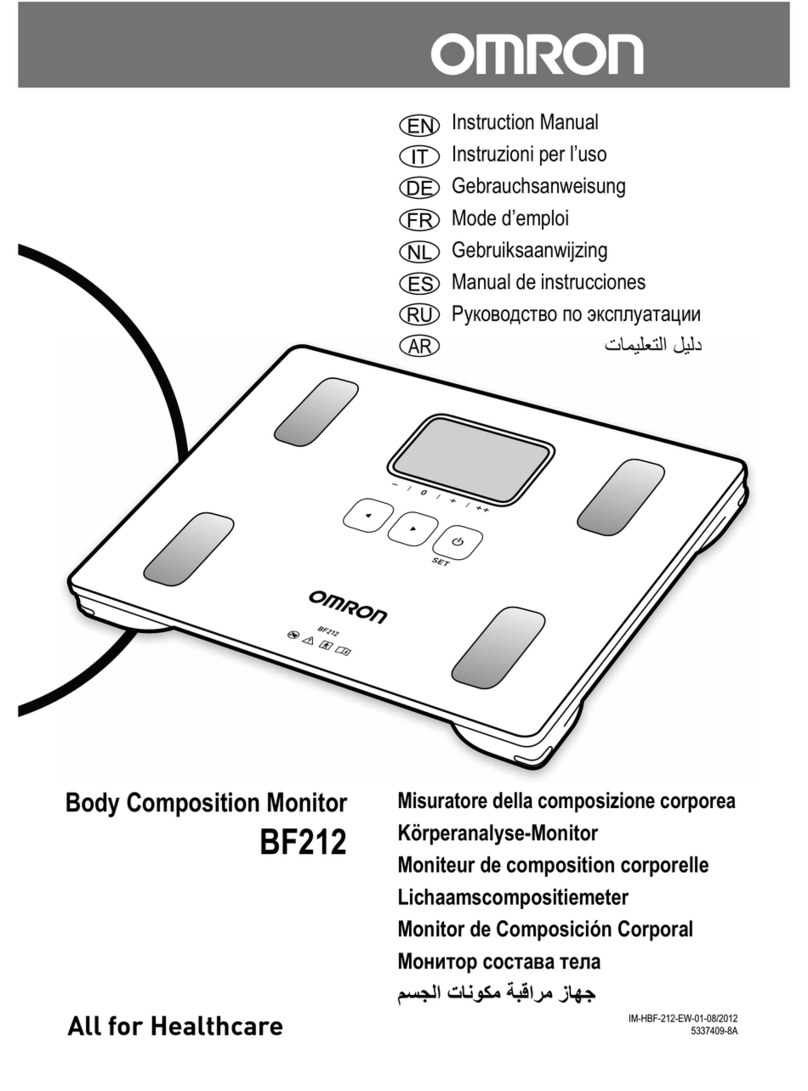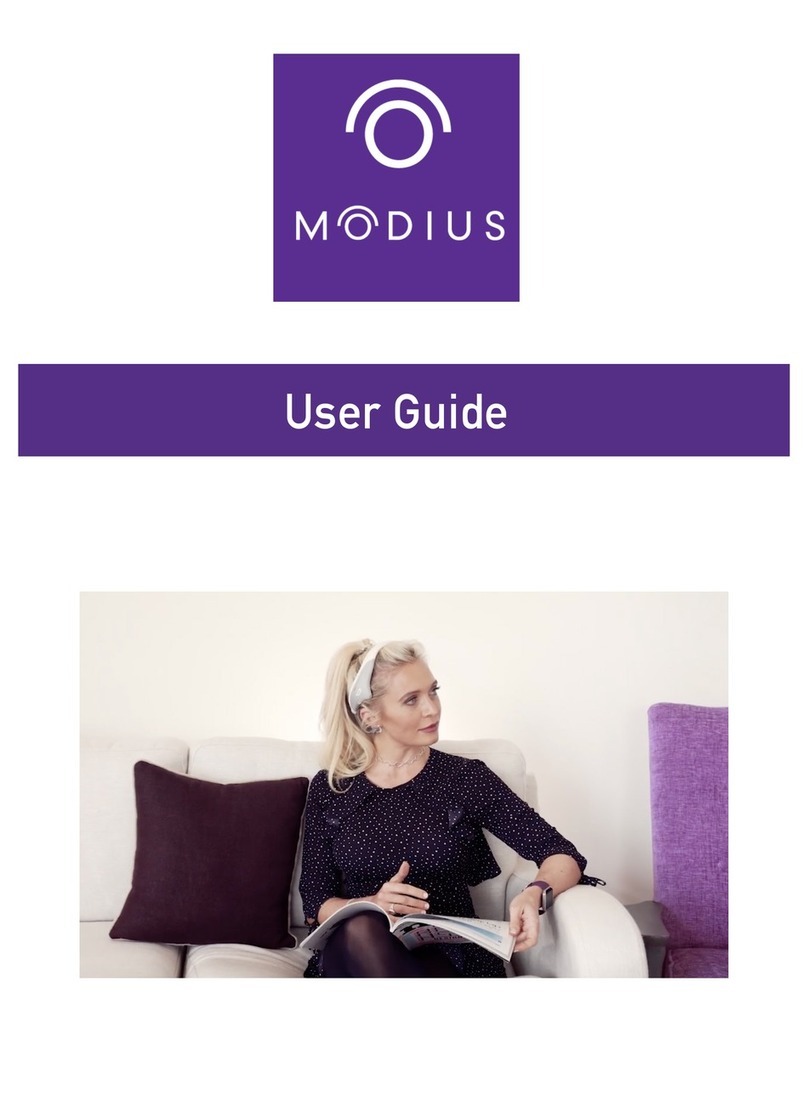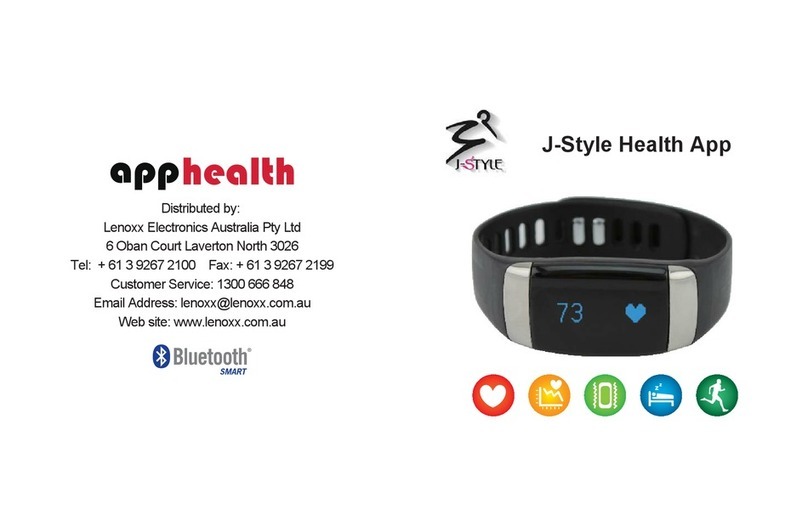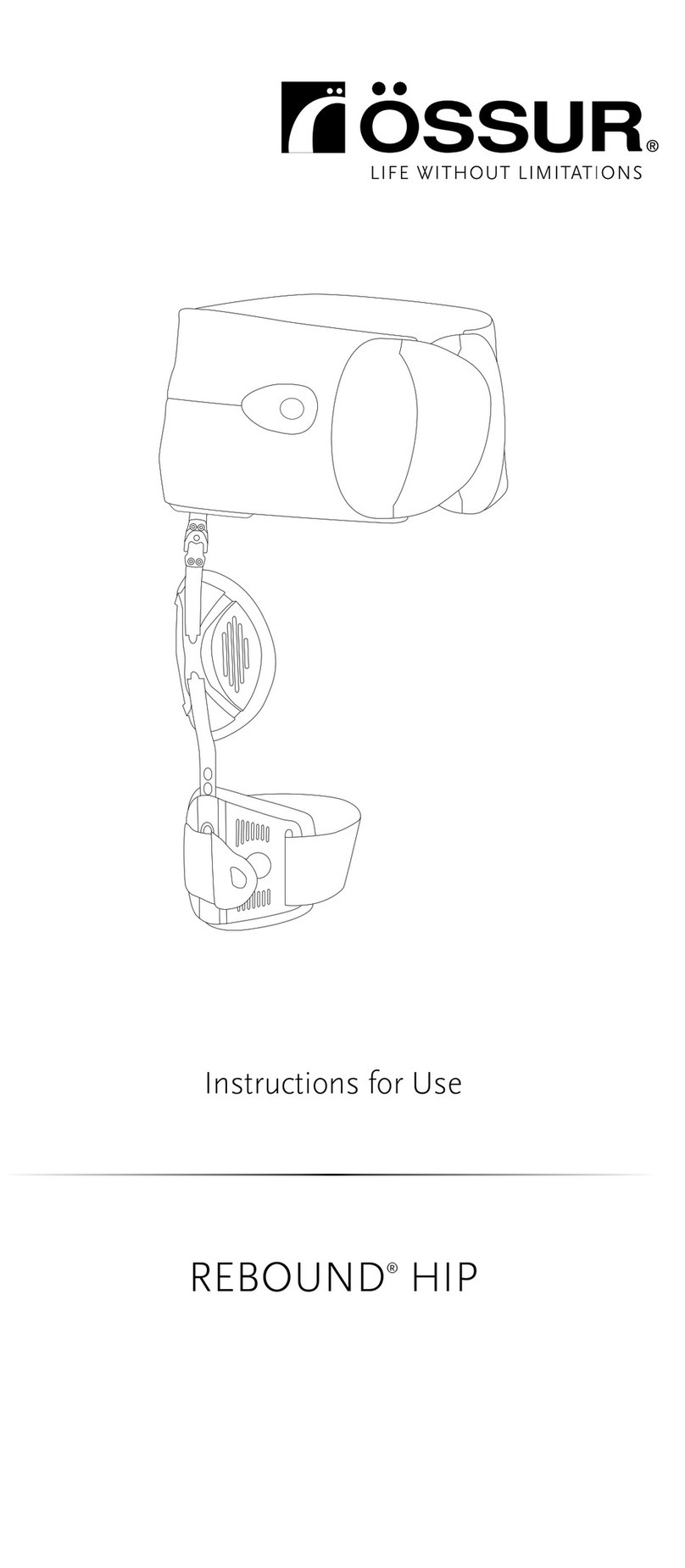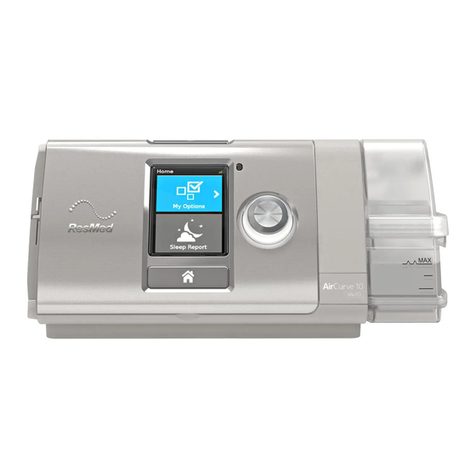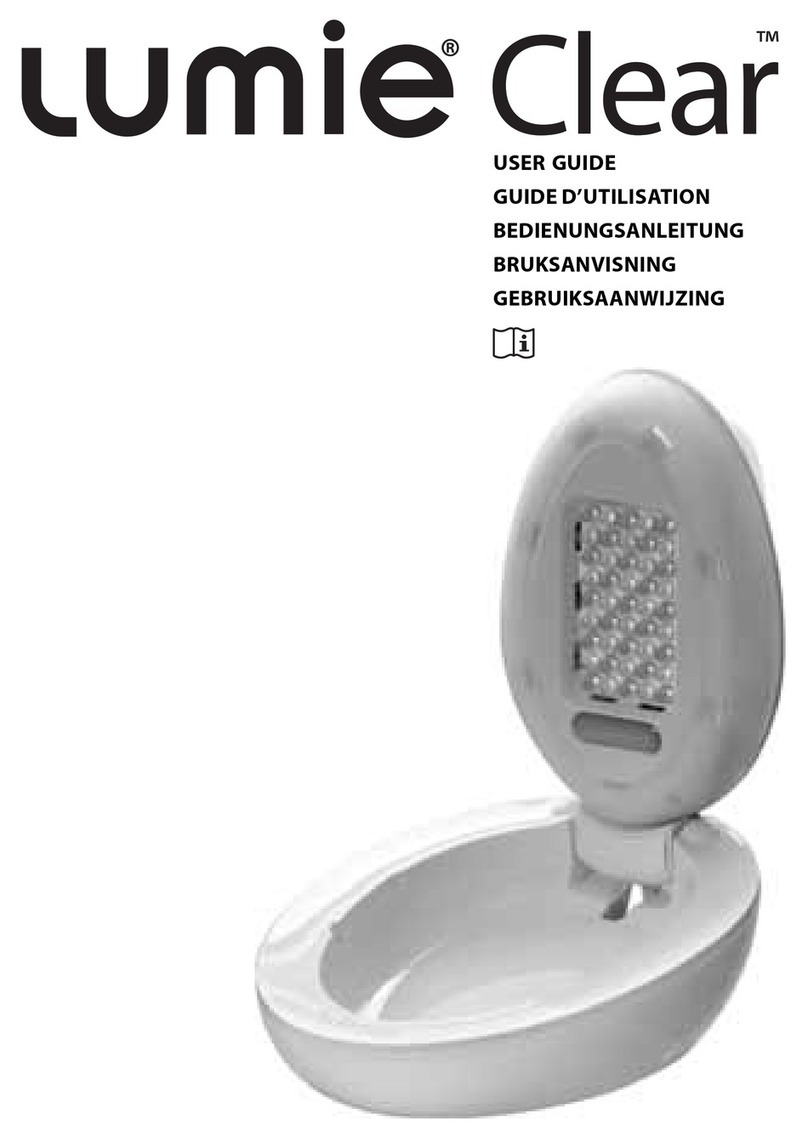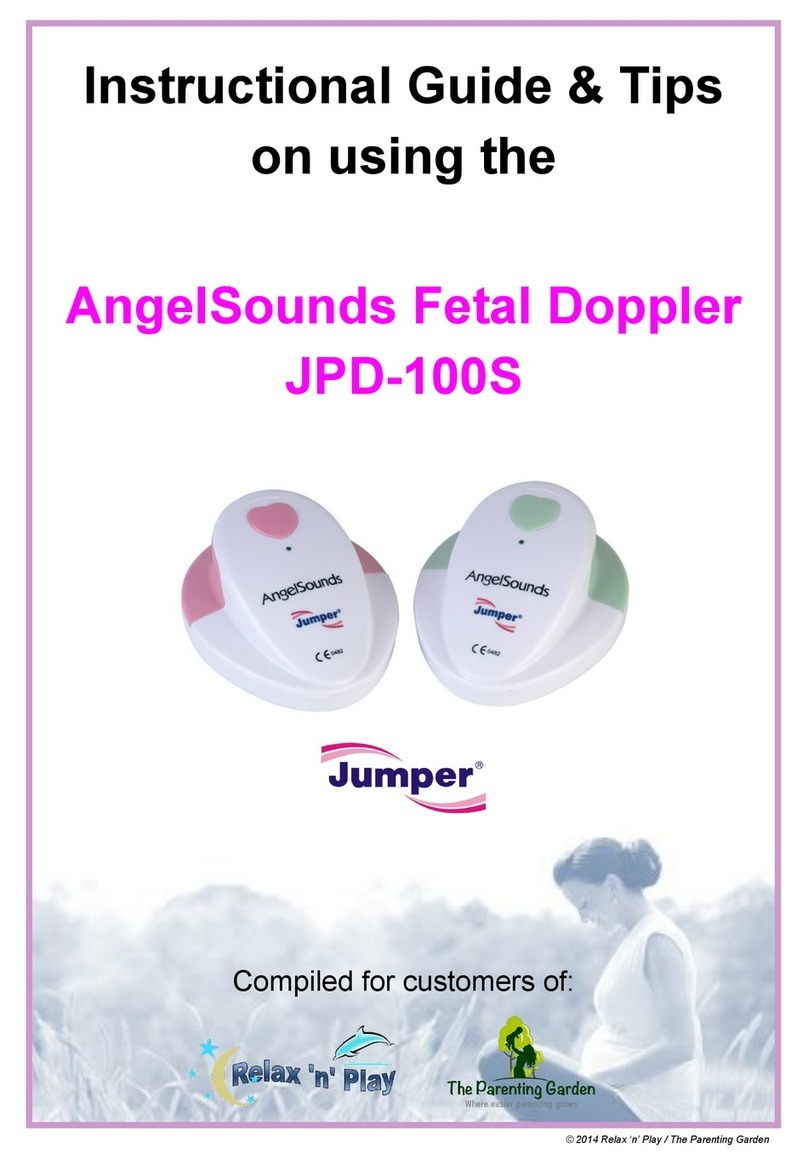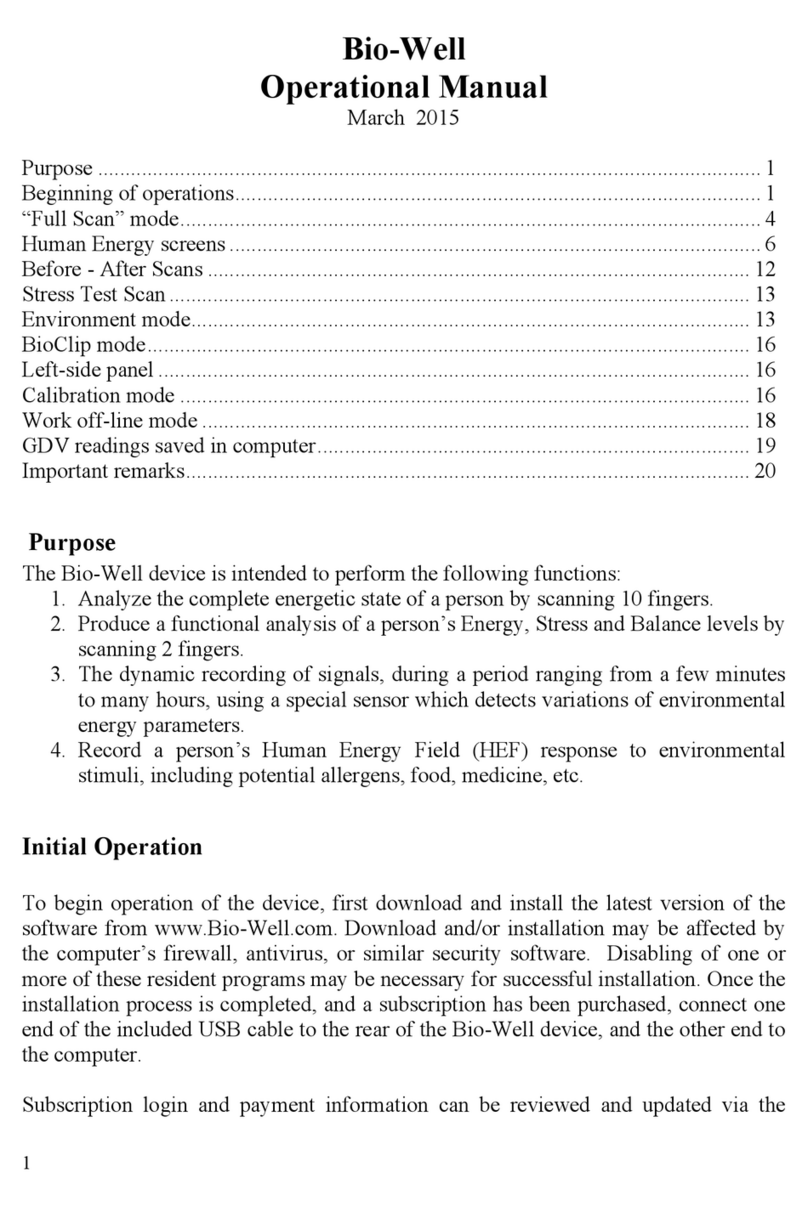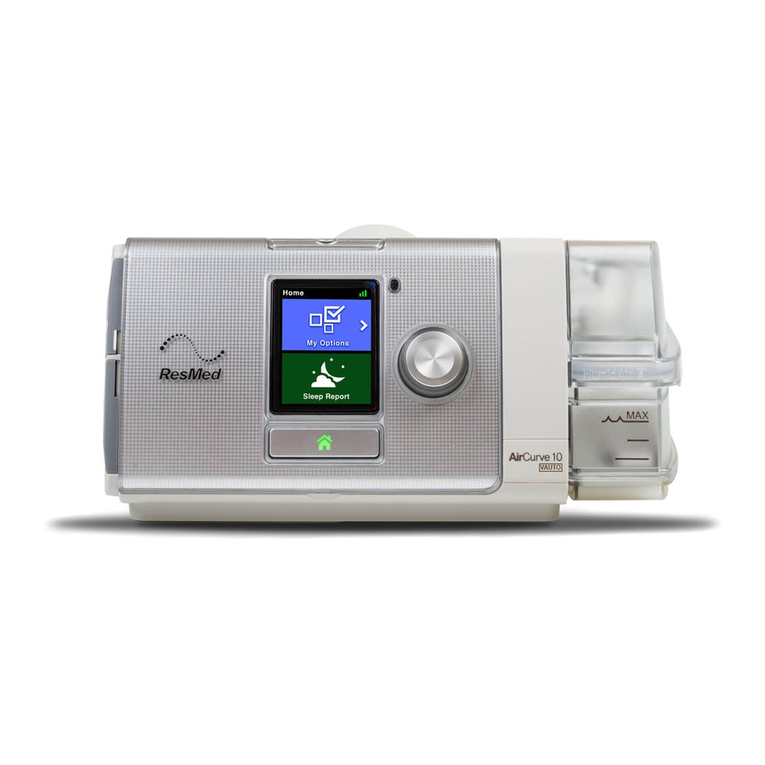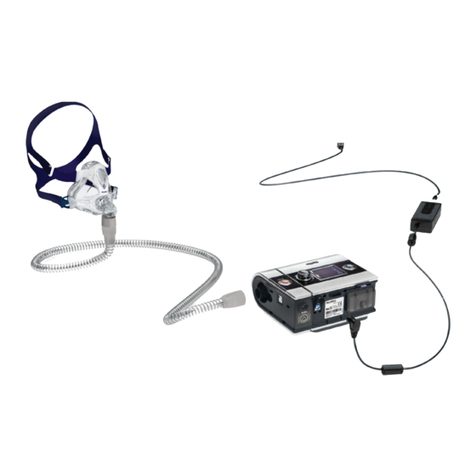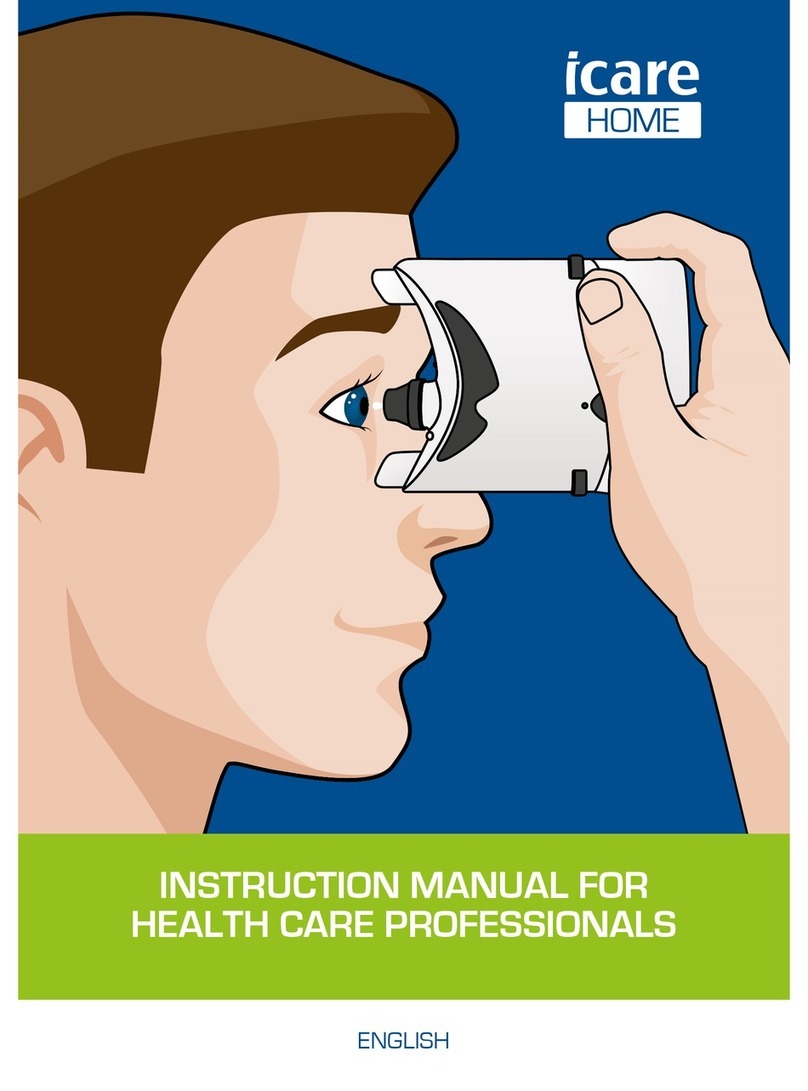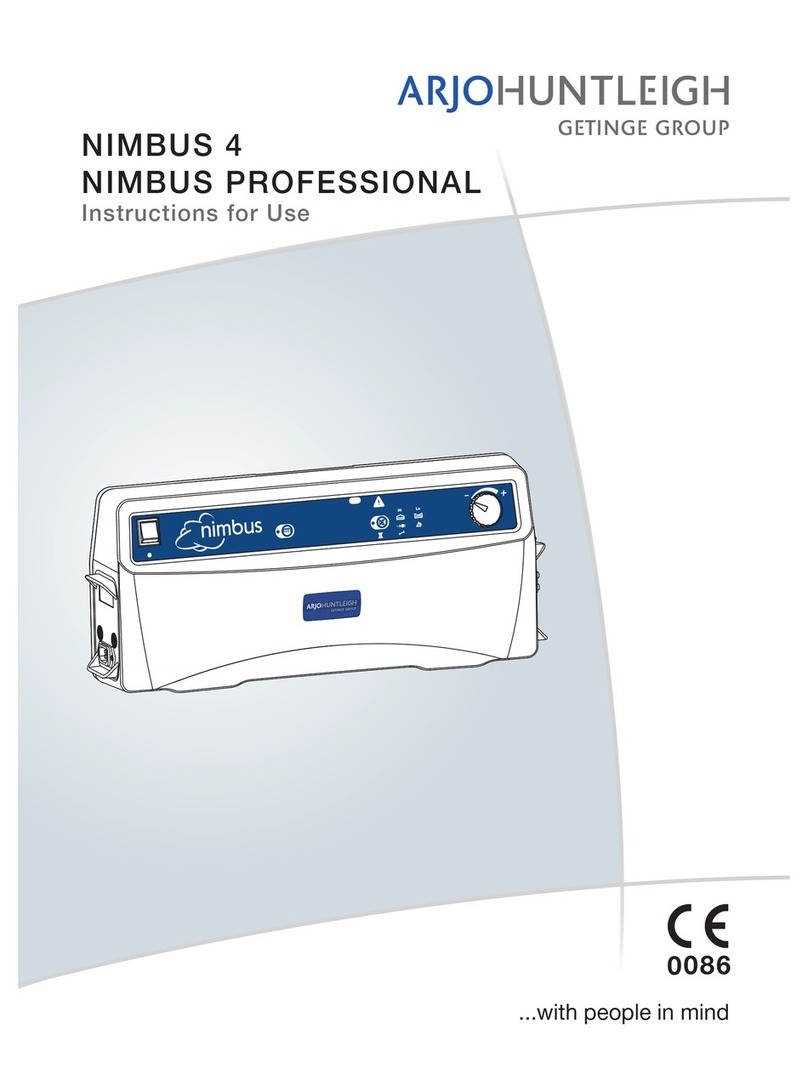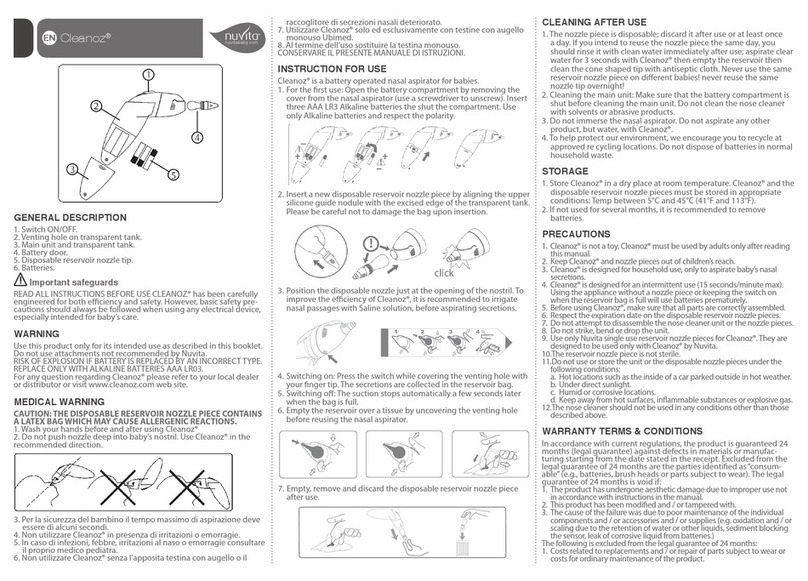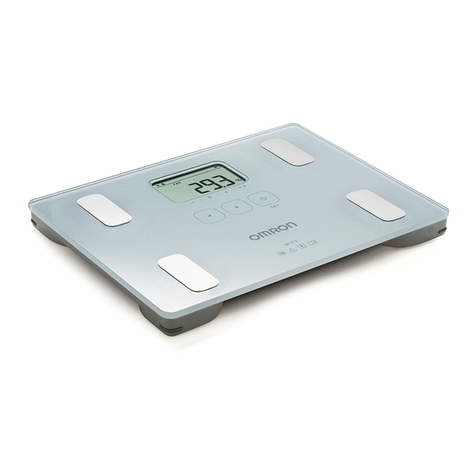Exi HALO User manual

Revision 2.0
Installation and Operations Manual
March 2000
© Copyright 1999, EXI Wireless Systems Inc. All rights reserved.

EXI HALO Installation & Operation Manual 981-000003-000
EXI Wireless Systems 2March 2000
Revision 2.0
Table of Contents
1. LIMITED WARRANTY..............................................................................................................................4
2. RECORD OF CHANGES............................................................................................................................6
3. FCC REGULATIONS..................................................................................................................................7
4. INTRODUCTION........................................................................................................................................8
4.1. ABOUT HALO INFANT PROTECTION SYSTEM............................................................................................. 8
4.2. SYSTEM COMPONENTS............................................................................................................................. 9
4.2.1. Door Control Package (Networked) – SR2C01N.............................................................................. 9
4.2.2. Elevator Package (Networked) – SR2L01N......................................................................................9
4.2.3. HALO Receiver Package (Networked) - SR2R01N ......................................................................... 10
4.2.4. Power Supply................................................................................................................................ 10
4.2.5. HALO Console.............................................................................................................................. 11
5. INSTALLATION .......................................................................................................................................12
5.1. OVERVIEW TO INSTALLING THE HALO SYSTEM ..................................................................................... 12
5.2. SYSTEM WIRING............................................................................................................................... 12
5.2.1. Cabling Type................................................................................................................................. 13
5.3. SYSTEM CONNECTION .................................................................................................................... 14
5.4. DOOR CONTROL ............................................................................................................................... 15
5.5. LOCATION FOR SRA EXCITER ANTENNAS................................................................................... 15
5.6. LOCATING THE RECEIVER ANTENNA .......................................................................................... 17
5.7. FINALIZE CONTROLLER INSTALLATION ..................................................................................... 18
5.8. INSTALLING RECEIVERS................................................................................................................. 20
5.8.1. Threshold Switch........................................................................................................................... 21
5.9. RS-485 INTERFACE MODULE (RIM)....................................................................................................... 22
5.9.1. RIM LED Status ............................................................................................................................ 22
5.10. INSTALLING ELEVATOR CONTROLLERS.................................................................................. 23
5.10.1. CONTROLLER CABINET INSTALLATION................................................................................... 24
5.10.2. LOCATION FOR SRA-E EXCITER ANTENNAS............................................................................ 25
5.10.3. Elevator Receive (RX) Antenna...................................................................................................... 26
5.10.4. Audible Alarm Module................................................................................................................... 26
5.10.5. Keypad.......................................................................................................................................... 26
5.10.6. “Door not Closed” Contact........................................................................................................... 27
5.10.7. Door Control and Fire Alarm Supervision..................................................................................... 27
5.10.8. System Adjustment and Testing...................................................................................................... 28
5.11. SYSTEM GROUNDING CONSIDERATIONS................................................................................. 28
6. PC NETWORKED INSTALLATION....................................................................................................... 29
7. THEORY OF OPERATION...................................................................................................................... 31
7.1. TAG COMMUNICATIONS......................................................................................................................... 31
7.2. HALO SYSTEM COMMUNICATIONS........................................................................................................ 31
7.3. HALO CONTROLLER ........................................................................................................................ 32
7.4. KEYPAD.............................................................................................................................................. 33
7.5. HALO RECEIVER............................................................................................................................... 35
7.6. ELEVATOR CONTROLLER............................................................................................................... 35
7.6.1. Pre-Alarm..................................................................................................................................... 35
7.6.2. Full-Alarm .................................................................................................................................... 36
7.6.3. Elevator Bypass............................................................................................................................. 36

EXI HALO Installation & Operation Manual 981-000003-000
EXI Wireless Systems 3March 2000
Revision 2.0
8. HALO CONSOLE (SINGLE STATION)..................................................................................................37
8.1. COMPUTER DISPLAY CONVENTIONS....................................................................................................... 39
8.2. CONNECTING TO THE HOST COMPUTER .................................................................................................. 40
8.2.1. Navigating the Dealer Screens....................................................................................................... 40
8.2.2. Adding a Floor Plan...................................................................................................................... 42
8.2.3. Adding System Devices.................................................................................................................. 43
8.2.4. Adding Tags and Users.................................................................................................................. 44
9. DKX KEYPAD PROGRAMMING ...........................................................................................................45
10. APPENDIX A - WEIGAND OUTPUT SPECIFICATION.................................................................... 46
11. APPENDIX B - ACCESSORIES............................................................................................................47
11.1. SELECT SOUND MODULE (SSM)................................................................................................. 47
11.2. ANN-6L SIX ZONE ANNUNCIATOR............................................................................................. 48
12. APPENDIX C - APPLICATION NOTES..............................................................................................49
12.1. HALO CONTROLLER HOOK UP WITH ANN-6L.......................................................................... 49
12.2. ANN-6L SWITCH CONFIGURATIONS................................................................................................... 50

EXI HALO Installation & Operation Manual 981-000003-000
EXI Wireless Systems 4March 2000
Revision 2.0
1. Limited Warranty
1. Warranty: Subject to the limiting conditions set forth below, EXI Wireless Systems Inc. (“EXI”) hereby
warrants that: (a) each product, other than transponders (the “Transponders”), accompanying this warranty
(the “Product”), will be free of defects in materials and workmanship for a period (the “Product Warranty
Period”) of two years after the date of the original sale by EXI of the Product; and (b) each Transponder
accompanying this warranty will be free of defects and workmanship for a period (the “Transponder
Warranty Period”) of, in the case of a WTX-INF/WS Transponder, four years, and in the case of all other
Transponders, three years, after the date of the original sale by EXI of the Transponder.
2. Notification: If the original or any subsequent purchaser (collectively, the “Purchaser”) of the Product or
Transponder, as the case may be, discovers a defect in materials or workmanship of a Product within the
Product Warranty Period, or a Transponder within the applicable Transponder Warranty Period, the
Purchaser must, within 30 days after the date of such discovery, notify EXI of such defect, and at EXI’s
request, return the defective Product or Transponder, as case the may be, to EXI.
3. Repair or Replacement: Subject to §4, upon acceptance by EXI of responsibility for the defect, EXI will,
in its sole discretion, (a) in the case of a Product, either replace the Product, or provide the Purchaser with
replacement parts for, or repair, the same; and (b) in the case of a Transponder, replace the Transponder at
a discounted price equal to the product of: (i) the nearest whole number of months remaining in the
applicable Transponder Warranty Period; and (ii) the amount of the then monthly credit available from EXI
for the applicable Transponder. EXI’s warranty in respect of any replacement Product, part thereof, or
Transponder, as the case may be, will be for the unexpired portion of the original warranty period
applicable to the relevant Product or Transponder.
4. Exclusion: The warranty referred to in §1 is the sole warranty made by EXI with respect to its Products
and Transponders. EXI makes no other warranty or representation, express or implied, and hereby
disclaims any implied warranty of merchantability or fitness for a particular purpose, statutory or
otherwise, concerning its Products and Transponders. In addition, the warranty will not apply if EXI has
not received a fully completed warranty registration card in respect of the Product or Transponder, as the
case may be, within 30 days after the date of the original purchase from EXI of the same, or the Product or
Transponder, as the case may be, or any part thereof: (a) is damaged by misuse, accident, negligence,
lightning, power surge, brown-out, or leaking, damaged or inoperative batteries, or failure to maintain the
Product or Transponder as specified or required by EXI; (b) is damaged by modifications, alterations or
attachments thereto which are not authorized by EXI; (c) is installed, operated or repaired contrary to the
instructions of EXI; (d) is opened, modified or disassembled in any way without EXI’s consent; or (d) is
used in combination with items, articles or materials not authorized by EXI.
5. Limitation: EXI will only be liable to the Purchaser for direct damages suffered by the Purchaser up to a
maximum amount equal to the total amount of the purchase price actually paid by the Purchaser to EXI for
the Product or Transponder, as the case may be. Specifically, EXI will not be liable for: (a) any special,
indirect or consequential damage, including lost profits, lost revenues, failure to realize expected savings,
or other commercial or economic losses of any kind, even if EXI has been advised of the possibility of such
damage; (b) any loss or damage to any property or for any personal injury or economic loss or damage
caused by the connection of the Product or Transponder, as applicable, to other devices or systems; (c) any
damage or injury arising from or as a result of, misuse, abuse or incorrect installation, integration or
operation of the Product or Transponder, as applicable, by persons not authorized by EXI; or (d) any defect
in any batteries added to or used in conjunction with the Product or Transponder.

EXI HALO Installation & Operation Manual 981-000003-000
EXI Wireless Systems 5March 2000
Revision 2.0
6. Product Limitation: The Purchaser (a) acknowledges that (i) the Products and the Transponders are not,
nor can they be, guaranteed to prevent wandering patients, infant abductions, theft or any other event for
which they were purchased, (ii) the Products and Transponders are only intended to provide additional
safeguards to assist in the prevention of events such as those described in §(i), and (b) understands fully the
foregoing limitations concerning the Products and Transponders, including EXI’s limitation on liability
described in §5, and agrees to warn, and obtain acknowledgements from, all users thereof of the same.
7. No Additional Warranties: The terms and conditions herein contain all the warranties and
representations concerning EXI’s Products and Transponders and supersede all previous negotiations,
understandings, communications, representations, warranties and agreements, whether verbal or written,
concerning the Products and Transponders.
8. Deemed Acceptance: The installation or use of the Product or Transponder by or at the direction of the
Purchaser will be deemed as an acceptance by the Purchaser of the terms hereof.
9. Governing Law: The warranty herein will be governed by the domestic laws of the Province of British
Columbia, Canada and the Purchaser hereby attorns to the exclusive jurisdiction of the laws of British
Columbia. The provisions of the United Nations Convention on Contracts for the International Sale of
Goods is hereby excluded.

EXI HALO Installation & Operation Manual 981-000003-000
EXI Wireless Systems 6March 2000
Revision 2.0
2. Record of Changes
October 1999 Combined HALO Installation & Operating Manual and Elevator Manual.
March 2000 Added Cabling types and Threshold / RX Sensitivity Switch Adjust.

EXI HALO Installation & Operation Manual 981-000003-000
EXI Wireless Systems 7March 2000
Revision 2.0
3. FCC Regulations
This device complies with Part 15 of the FCC Rules. Operation is subject to the following two conditions: (1) This
device may not cause harmful interference, and (2) This device must accept any interference received, including
interference that may cause undesired operation.
This equipment has been tested and found to comply with the limits for Class B Digital Device, pursuant to Part 15
of the FCC Rules. These limits are designed to provide reasonable protection against harmful interference in a
residential installation. This equipment generates and can radiate radio frequency energy and, if not installed and
used in accordance with the instructions, may cause harmful interference to radio communications. However, there
is no guarantee that interference will not occur in a particular installation. If this equipment does cause harmful
interference to radio or television reception, which can be determined by turning the equipment off and on, the user
is encouraged to try to correct the interference by one or more of the following measures.
•Reorient or relocate the receiving antenna
•Increase the separation between the equipment and receiver
•Connect the equipment into an outlet on a circuit different from that to which the receiver is connected
•Consult the dealer or an experienced radio/TV technician for help
Any changes or modifications not expressly approved by the party responsible for compliance could void the user’s
authority to operate the equipment.
EXI Wireless Systems Model No.: Patient Tag
CANADA: 287710217261A FCC ID: HE7 PTG
*
This device complies with Part 15 of the FCC Rules. Operation is
subject to the following two rules: (1) This device may not cause harmful
interference, and (2) This device must accept any interference received,
including interference that may cause undesired operation.
Made in Canada
EXI Wireless Systems Model No.: Halo Infant/ECO tag
CANADA: TBD FCC ID: HE7 ETG
*
This device complies with Part 15 of the FCC Rules. Operation is
subject to the following two rules: (1) This device may not cause harmful
interference, and (2) This device must accept any interference received,
including interference that may cause undesired operation.
Made in Canada
EXI Wireless Systems Model No.: Halo Asset tag
CANADA: TBD FCC ID: HE7 ATG
*
This device complies with Part 15 of the FCC Rules. Operation is
subject to the following two rules: (1) This device may not cause harmful
interference, and (2) This device must accept any interference received,
including interference that may cause undesired operation.
Made in Canada

EXI HALO Installation & Operation Manual 981-000003-000
EXI Wireless Systems 8March 2000
Revision 2.0
4. INTRODUCTION
This manual serves as a guide for Installers of the HALO system. The major components of the system are
described, as well as the system’s intended functionality, so as to gain familiarity with its operation prior to
installation. In order to successfully install and commission the system, it is absolutely critical to
understand the capabilities of the system and its components prior to installation.
4.1.About Halo Infant Protection System
Halo is a premium infant protection system. Halo works in conjunction with the EXI P-tag patient
transponder that is capable of sensing if it has been removed from the infant. Halo is an electronic system,
which, in conjunction with staff diligence, creates a secure perimeter to deter infant abductions.
The function of the HALO system is to monitor areas within a building for the presence of HALO Tags. A
Tag is sensed when it either enters an RF Field that is set up using the EXI HALO Controller (referred to as
a Tag in Field or TIF), or when the Tag initiates an alarm signal (referred to as Tag Initiated
Communications, or TIC).
HALO is designed to assist staff in providing a higher degree of safety for patients. It is not intended as
the sole means of protection in preventing a wanderer or infant from leaving the premises. Regular
checks to verify that your HALO system is operational is highly recommended.
SYSTEM MAINTENANCE SHOULD INCLUDE THE FOLLOWING STEPS:
All Tags should be checked for physical damage after each cleaning, disinfecting or sterilization
procedure.
Each Tag should be tested for correct operation before being attached to an infant. The HALO
software prompts for testing of Tags prior to their deployment. Please refer to the appropriate
section in this manual for the instructions.
The warranty on Tags is 3 years, and the batteries within the Tags are expected to last in excess of
the warranty period depending on the usage pattern. Do not leave Tags in the detection field for
long periods of time, and store them in the foil bags supplied. Failure to do so will result in false
alarms, and will reduce battery life.
Set up a regular system check schedule to verify that the Controllers, Receivers and Tags are
operational. Controllers should have the “Ready” light illuminated to show that they are powered.
Check the operation of the Controller daily by starting a bypass or triggering an alarm using a Tag
to ensure that it is fully operational and protecting the egress point where it is located.
Check each Receiver on a regular basis to ensure that it can receive signals from Tags in the “Off
Body” condition. Failure to regularly check for this operation may lead to failure to detect a Tag
that is removed from an infant, and therefore compromising protection for the infant.
Whenever you see an infant who is a patient, look for the Tag on this infant to verify that it is still
securely attached. This may require special knowledge as to the placement of the Tag.
Conduct frequent back-ups of Activity Logs for future reference.

EXI HALO Installation & Operation Manual 981-000003-000
EXI Wireless Systems 9March 2000
Revision 2.0
4.2.System Components
This section describes the various system components required to complete the installation of the HALO
system.
4.2.1. Door Control Package (Networked) – SR2C01N
Figure 1- Halo Controller Package
4.2.2. Elevator Package (Networked) – SR2L01N
Figure 2- HALO Elevator Controller Package

EXI HALO Installation & Operation Manual 981-000003-000
EXI Wireless Systems 10 March 2000
Revision 2.0
4.2.3. HALO Receiver Package (Networked) - SR2R01N
Figure 3- HALO Receiver Package
4.2.4. Power Supply
Individual power supply adapters Model # AR2PS01-024 may be used for each of the Door Control
Packages and the Receivers. Alternatively, a Central Power Supply Model # AGECP01-624 has 6
independent inputs, each of which can power one Controller or two Receivers. The CPS may be purchased
with a battery back-up option, which is highly recommended.
Figure 4– Power Supply choices

EXI HALO Installation & Operation Manual 981-000003-000
EXI Wireless Systems 11 March 2000
Revision 2.0
4.2.5. HALO Console
Figure 5- HALO Computer Package

EXI HALO Installation & Operation Manual 981-000003-000
EXI Wireless Systems 12 March 2000
Revision 2.0
5. Installation
5.1.Overview to Installing the HALO System
EXI HALO is designed to provide extended periods of reliable service. Once installed correctly, the system
does not require tuning or adjustments, and it should provide exemplary service unless the position of its
components is subsequently disturbed, the physical environment is altered as in a renovation, or a very strong
noise source is introduced into the environment.
Figure 6– Typical HALO System Installation
5.2.SYSTEM WIRING
The HALO network is based on the RS-485 electrical interface standard, which is 2-wire multi-node bus.
The EXI HALO elements are designed such that many more than the RS-485 limit of 32 Drivers and 32
Receivers can be co-exist on the same network. The baud rate used in the HALO system is 57,600 bps, and
therefore in order to avoid data corruption it is important to ensure that a clean signal is always present.
Using the right type of cable, network topology, and not exceeding total cable length are critical factors in
ensuring that the system will operate reliably.
Figure 7- "Bus" Topology Figure 8- "Star” Topology
RIM
HALO Network
SRA Exciter
Antenna
Keypad
HALO
Controller
SRA-E Exciter
Antennae (2)
HALO
Receiver
Keypad
Mag Switch
MagLock
Elevator
Penthouse
CPS-24
Central Power
Supply
Power Distribution
HALO
Transponders
HALO
Elevator
Controller
ELEVATOR
ELECTRICAL
ROOM
Elevator
Travel
Cable
HALO
Console
RS-485
Repeater
6 Lines + GND
"Bus" (Series)
Configuration

EXI HALO Installation & Operation Manual 981-000003-000
EXI Wireless Systems 13 March 2000
Revision 2.0
Cable capacitance is a large factor in determining the quality of the signal on the network, and EXI recommends that
cables with capacitance of greater than 15 pf per foot should be avoided. The network should be constructed using a
“multi-drop bus” type topology, avoiding any “star” type configuration. The system is designed to operate with up to
4,000 ft of cable with the recommended topology and cable. The total cable length varies depending upon the cable
capacitance and nominal impedance, topology, and number of devices on the network. If the estimated total cable
length is greater than 4,000 ft, a RS-485 Repeater will be required to ensure that the system works reliably, or works
at all. It is also recommended that a Repeater be used to isolate HALO Elevator Controllers from the main system to
minimize noise pick-up and loading of the system. Cables used in Elevator shafts should be stranded and not solid,
and should be resilient enough to withstand the continuous flexing that it will experience for many years in the
elevator shaft.
Figure 9- Typical HALO Configuration
5.2.1. Cabling Type
Power Cable 2-conductor, 18-gauge, shielded or unshielded.
RS485 Network Cable 2-pair, unshielded twisted pair, 24-gauge, maximum capacitance
15pF per feet.
Ethernet Network Cable 10 Base –T cabling
CAT 5 – 4-pair, unshielded twisted pair.
Elevator Travel Cable 3-conductor, shielded, stranded, low capacitance travel cable.
R2RECEIVER
DATA
COMM.
MadeinCanada . . withcare
12/24VDC
GROUND
DATA0
DATA1
N/O1
COM1
N/C1
N/O2
COM2
N/C2
1 2 3 4 5 6 7 8 9 10
POWER RELAY
Controller 1
Whip
Antenna Exciter
Antenna
HALO Network
RECEIVE
ANTENNA RBC
FCCID# HE7MAX
TRANSMITOUTPUT
SEA#1 SEA #2
Madein Canada. . withcare Controller
by
Power
1 2 3 4 5 6 7 8 9 10 11 12 13 14 15 16 17 18 19 20
+24VDC Input
SystemGround
+12VOu 200 ma
SystemGround
Weigand 0/Data
Weigand 1/Gnd
SystemGround
MagOut 24V 200 ma
DoorSwitch In
SystemGround
UnlockIn
OverrideIn
StrobeIn
N.O
COM
N.C.
N.O
COM
N.C
Relay#1 Relay#2
AlarmIn
OFFON
EXIELECTRONICSYSTEMS
Winnipeg, Manitoba (204) 788-1696
Made in Canada
PRODUCT
MODELNO.
SERIAL NO>
ROAM II/TAGRRR
SEA-M
1118
24V Output 1
Whip
Antenna Exciter
Antenna
RECEIVE
ANTENNA RBC
FCCID# HE7MAX
TRANSMITOUTPUT
SEA#1 SEA #2
Madein Canada. . withcare Controller
by
Power
1 2 3 4 5 6 7 8 9 10 11 12 13 14 15 16 17 18 19 20
+24VDC Input
SystemGround
+12VOu 200 ma
SystemGround
Weigand 0/Data
Weigand 1/Gnd
SystemGround
MagOut 24V 200 ma
DoorSwitch In
SystemGround
UnlockIn
OverrideIn
StrobeIn
N.O
COM
N.C.
N.O
COM
N.C
Relay#1 Relay#2
AlarmIn
OFFON
RIM
RIM
Receiver 1
Whip
Antenna
RIM
RS485 Bus
TAP
TAP
TAP
PC
Terminator
RS-485
Repeater
Elevator Controller
RIM
EXIELECTRONICSYSTEMS
Winnipeg, Manitoba (204) 788-1696
Made in Canada
PRODUCT
MODELNO.
SERIAL NO>
ROAM II/TAGRRR
SEA-M
1118
CPS-24
Central Power Supply
24V Output 2
24V Output 3
To 2nd Receiver
(2 Receivers per output)
CentralPowerSupply
ElevatorControlSystem

EXI HALO Installation & Operation Manual 981-000003-000
EXI Wireless Systems 14 March 2000
Revision 2.0
5.3.SYSTEM CONNECTION
The figure below shows the details of connecting the various system components together for the HALO
system.
Figure 10 - Detailed System Diagram
RECEIVE
ANTENNA RBC
FCC ID# HE7MAX
TRANSMIT OUTPUT
SEA #1 SEA #2
Made in Canada . . with care Controller
by
Power
1 2 3 4 5 6 7 8 9 10 11 12 13 14 15 16 17 18 19 20
+24V DC Input
System Ground
+12V Out 200 ma
System Ground
Weigand 0/Data
Weigand 1/Gnd
System Ground
MagOut 24V 200 ma
Door Switch In
System Ground
Unlock In
Override In
Strobe In
N.O
COM
N.C.
N.O
COM
N.C
Relay #1 Relay #2
Alarm In
OFF ON
R2 Controller
RS+
RS-
GND
RS+
RS-
GND
R2 RECEIVER
DATA
COMM.
Made in Canada . . with care
12/24 VDC
GROUND
DATA 0
DATA 1
N/O 1
COM 1
N/C 1
N/O 2
COM 2
N/C 2
POWER RELAY
1 2 3 4 5 6 7 8 9 10
DKX
Keypad
Optional
PS-24
Power
Supply
EXI ELECTRONIC SYSTEMS
Winnipeg, Manitoba (204) 788-1696
Made in Canada
PRODUCT
MODEL NO.
SERIAL NO>
ROAM II/TAGRRR
SEA-M
1118
Brn
RIM
Grn
Blk
Blu
Whi
Red
Yel
1 2 3
4 5 6
7 8 9
*0#
Grn
Blk
Blu
RIM
R2 TAP
PC Terminator
Box
PC to
Network Cable
RS-485
Weigand
Brn
Pin# Wire
Color Function
3Brown +12/24 V
4Green System GND
5Black Weigand 0/Data
6Blue Weigand 1/Data
10 White Alarm In
12 Red Unlock In
13 Yellow Override In
14 Gray Strobe In
Factory
Wired
Factory
Wired
RS-485 Shielded Cable, 24 AWG
Maximum Capacitance 15 pf per foot
Example: Electro Cables FT-4 Part #5302452
Daisy Chain (Series) Configuration as much as
possible.
RS-485 Connector (To Halo
NetworkController Output)
DB9
R2
Receiver
Pin
Function Wire
Color DB 25
1+12/24V Brown 14
2System GND Green 7
3Data 0 Black 20
4Data 1 Blue 22
TAP
Optional
PS-24
Power
Supply
Pin # Function
9 or 12 RS +
7GND
22 or 25 RS -
RIM Pin-Out
Com
NOTE: Check all network
wiring before connecting
to the PC.
Enlarged
View
RS +
Gnd
RS -
Caution: Ensure appropriate
stranded cables are used for
Elevator Shafts due to the
continuous flexing they will
have to endure!
Factory
Supplied
Factory
Supplied
RS-485
Weigand
Factory
Supplied
Optional RS-485 Repeater
(Required for total cable length
of greater than 4,000 ft, and
highly recommended for isolation
of Halo Elevator Controller)
RS-485
Repeater
Halo Receiver Connector Pin-Out
Halo Controller Connector Pin-Out
Optional, to
Enhance
Coverage
Elevator System or
other devices
Function Type 1 Type 2 Type 3 Type 4
RS +Yellow Brown Black Red
GND Green Blue White Green
RS -White Red Red Black
RS-485 3-Conductor Cable Code
(All have same function, but 4 versions of wire color)
O
r
a
n
g
e
o
r
G
r
a
y

EXI HALO Installation & Operation Manual 981-000003-000
EXI Wireless Systems 15 March 2000
Revision 2.0
5.4.DOOR CONTROL
The controller chassis may be horizontally or vertically mounted, on a wall, ceiling or shelf and should be
mounted so that the front face panel is easily accessible. Since it is preferable to leave the RX antenna attached
directly to the controller, the exact location of the controller will affect the reception of the tags and should
only be finalized after setting up the field. The RX antenna should be positioned on a vertical plane for
maximum performance.
Figure 11 – Door Coverage
•Mount the Keypad about 10’ away from door so that it can be used before entering the detection
field.
•Maglock release should be hooked up to an unused auxiliary normally open contact from Fire
Alarm Panel.
5.5.LOCATION FOR SRA EXCITER ANTENNAS
One of the most important aspect of the entire installation is the correct positioning of the SRA Exciter
Antenna. The Antenna may be installed:
Øabove the doorway, laid flat on the dropped ceiling tile.
Ødropped inside a wall cavity 4’ above the floor.
Øon the side wall along the hallway 4’ above the floor.
Each field needs to be fully tested to ensure adequate coverage of the protected area.
HALO
Controller
Door Sense
Magnetic Switch
Keypad
Exciter Antenna
Mag-Lock
EXIELECTRONICSYSTEMS
Winnipeg,Manitoba(204)788-1696
MadeinCanada
PRODUCT
MODELNO.
SERIALNO> ROAMII/TAGRRR
SEA-M
1118
RoamII&Tagrrr
RECEIVE
ANTENNA RBC
FCCID# HE7MAX
TRANSMITOUTPUT
SEA#1 SEA#2
MadeinCanada. . withcare Controller
by
Power
1 2 3 4 5 6 7 8 9 10 11 12 13 14 15 16 17 18 19 20
+24VDC Input
SystemGround
+12VOu 200 ma
SystemGround
Weigand 0/Data
Weigand 1/Gnd
SystemGround
MagOut 24V 200 ma
DoorSwitch In
SystemGround
UnlockIn
OverrideIn
StrobeIn
N.O
COM
N.C.
N.O
COM
N.C
Relay#1Relay#2
AlarmIn
OFFON
D
e
t
e
c
t
i
o
n
A
r
e
a
~
1
0
'
RIM
TAP
To other
Devices
To Computer
Power

EXI HALO Installation & Operation Manual 981-000003-000
EXI Wireless Systems 16 March 2000
Revision 2.0
Figure 12 - SRA Antenna Exciter Field
Figure 13 - SRA Antenna Installation and Coverage
POOR COVERAGE
Surface mounted SEA on low plaster board,
wood plankor dropped ceiling, provides
approximately 12' horizontal coverage and
approximately 8 - 10' down from ceiling.
Surface mounted SEA on low plaster board,
wood plankor dropped ceiling, directly above
sliding door, provides approximately 6 - 8'
horizontal and 8 - 10' vertical coverage down
from ceiling.
Economical
2 SEA's horizontally surface wall mounted
4'6" up from floor, directly opposite each
other. Provides 10' horizontal coverage
from floor to ceiling.
one horizontal, surface mounted SEA 4'6"
up from floor, provides 6 - 7' horizontal
coverage and 10' vertical coverage from
floor to ceiling. However, close proximity to
inner door may not be suitable due to nearby
wanderers in corridor.
A) GOOD COVERAGE B) POOR COVERAGE
C) GOOD COVERAGE D) GOOD COVERAGE
Detection Areas
EXI ELECTRONIC SYSTEMS
Winnipeg, Manitoba (204) 788-1696
Madein Canada
PRODUCT
MODEL NO.
SERIAL NO>
ROAM II/TAGRRR
SEA-M
1118

EXI HALO Installation & Operation Manual 981-000003-000
EXI Wireless Systems 17 March 2000
Revision 2.0
Take note of the following:
•Ensure that no tag can reach the protected area without passing through a field.
•The field should not extend into other rooms or areas that are regularly occupied by tags. These tags
could keep a controller in a pre-alarm state preventing the door from opening if magnetic door locks
are being used.
•The tag should be detected at least 4 feet from the door in order to give the magnetic door lock time to
energize.
•Proximity to other fields could also be a factor. If a Tag is able to receive communication from 2
different controllers in the case of field overlap, it will try to respond to both controllers. Each
controller will see Tag communication when it doesn’t expect it and report it as noise, thereby
inhibiting any alarms..
•The antenna should be located be at least 18” away from metal objects, cables, air ducts etc. in order to
be able to create a uniform field with minimal loss of RF power.
Ceiling height, door approach width and metal in the vicinity, need to be considered when planning the location
for the exciter antennae. The field should extend to the floor and cover the entire exit way. A dropped ceiling
consisting of a grid and non-foil backed ceiling tile are the easiest construction materials to work with. Check
above the lay-in tile to see how much space you have and the proximity of metal objects such as pipes, cables
and air plenums. The SRA may also be dropped inside a wall cavity. Sometimes it’s simpler to mount the SRA
on the side of a wall above the door or along the hallway about 5 feet from the floor.
Extensive metal close to the Exciter can distort the field in unpredictable ways. Metallic objects will absorb
and/or reflect radiated energy, which affects the field. This phenomenon can increase or decrease the field
strength in areas causing hot spots or holes in your field. It can even change the shape of the field with tag
detection sometimes occurring as much as 35 ft away. At times this effect can be used to advantage but the
desired result can only be determined experimentally.
Although it is not possible to completely predict the performance of the field for every situation, some
information about the field will help to shorten the process of determining the best location for the SRA. In the
absence of any site irregularities, the field is symmetrical, perpendicular to the antenna length. A cross-section
through the length of the antenna is roughly oval as shown below.
Although the field strength is adjustable, the maximum distance for good coverage is approximately 10 feet.
Sometimes 2 exciters are necessary to get adequate coverage.
5.6.LOCATING THE RECEIVER ANTENNA
The “RX” Antenna should be mounted in a vertical plane. The “RX” Antenna is provided with a removable
right angle fitting that facilitates the desired mounting position. The area to be protected has to be blanketed
by controllers and receivers so that all critical areas have coverage. Elevator Interfaces cannot be included in
the area calculations since the elevator is not always on the floor. Walls, equipment and excess metal could
affect the pickup range. Although greater distances are possible, a maximum of 40’between devices is
recommended.
If it’s not possible to create a proper field with the exciter inside,
an SRA-E exciter antennae could be placed on an outside wall to
limit the penetration of the field into the building. Watch out for foil
backed ceiling tile!
Note: The coax cable used is RG59U with a solid copper center conductor and shield. SEA
exciters draw current therefore do not use ordinary RG59U cables to extend the length supplied as
they used copper clad steel.

EXI HALO Installation & Operation Manual 981-000003-000
EXI Wireless Systems 18 March 2000
Revision 2.0
It is essential that the RX antennas have no metal barriers blocking the signals from the Tags although some
metal objects may enhance communication by reflecting the signal further than it would normally transmit.
Wire glass sometimes found around nurseries can cut down the range. The only way to be sure of adequate
coverage is by testing the results. After all devices are installed and operational, ensure that the entire area has
coverage. Experience will shorten this process as the installer learns what site conditions cause problems.
5.7.FINALIZE CONTROLLER INSTALLATION
Fasten SRA exciter antenna. If installing the SRA above a ceiling tile, use a marker pen to draw an outline of
the SRA in its desired position on the upper side of the tile. Once you are certain of the SRA location, use
some adhesive or caulk to cement the SRA to the tile, preventing it from falling on the floor should the tile be
lifted for any reason.
If the SRA is to be dropped inside a wall cavity, do not let it hang on the coax cable nor hang so low that it
touches the bottom steel plate. Loop the coax cable and wrap a tie-wrap, or band of electrical tape around it as
shown below. Ensure the SRA will hang at the correct height by marking the cable prior to dropping the SRA
inside the wall. Secure the cable when the SRA is hanging in the correct position.
Figure 14 - Securing the Exciter Antenna Cable
Mount the Controller permanently and position the RX antenna. Place the RIM close to the Controller and
connect the three wires on the RS-485 side of the RIM to the RS-485 network. This may be done by using
crimp type connectors, or by means of an EXI TAP box.
The Keypad is designed for flush wall mounting in a standard single-gang electrical box. Should surface
mounting be necessary, an optional SMB box may be used. Should a louder local alarm be desired, either use a
Wire-mold box extension and break out the knock out holes before mounting the panel, or install an external
siren or other audible device.
Install door switch. Hook up Maglock and any peripheral devices. Make sure the Maglock will release in case
of a Fire Alarm. Power up and test the field again.
Figure 15 - Maglock Installation
RIMs have unique serial numbers that are associated with the Controller or
Receiver location that they serve. Ensure that the correct RIM is used at the
location being entered on the floor plan in the computer!
EXI ELECTRONIC SYSTEMS
Winnipeg, Manitoba (204) 788-1696
Madein Canada
PRODUCT
MODEL NO.
SERIAL NO>
ROAM II/TAGRRR
SEA-M
1118

EXI HALO Installation & Operation Manual 981-000003-000
EXI Wireless Systems 19 March 2000
Revision 2.0
5.7.1.1. CONTROLLER CONFIGURATION SWITCHES
Figures 16 and 17 – Controller Switch Identification
5.7.1.2. MODE SWITCH SETTING
Mode
Switch Controller Function Response
0Test Mode
3Patient Monitoring with Keypad Alarm ends on its own – fixed maximum bypass time
4Patient Monitoring with Keypad Continuous alarm - fixed maximum bypass time
1
2
“Mode” Switch
“Option” Switch
SRA Antenna Adjust
1
2Relay 1 = TIF
Relay 2 = TIC Both Relays
active on TIF
J2: Relay function
Transponder Ranges
(Not used)
Threshold / RX
Sensitivity
Switch

EXI HALO Installation & Operation Manual 981-000003-000
EXI Wireless Systems 20 March 2000
Revision 2.0
5.7.1.3. OPTION SWITCH SETTING
Option
Switch Function Patient Monitoring Authorized Entry
0Don’t act on any Tags No Tags are stopped No Tags authorized
1Act on all Tags All Tags will be
stopped All Tags authorized
5.7.1.4. THRESHOLD / RX SENSITIVITY SWITCH
The Threshold switch may be adjusted to increase or reduce the sensitivity of the Receiver and therefore
the range of detection of the Tag.
It is also used to remove some of the background noise as well as reduce interference from tags if the
controller is having trouble detecting tags. The result in the adjustment raises the RF field strength
threshold received from the tags in order to trigger the CPM into alarm (ie. from 25uV to 50uV) and
reduces the detection field range.
‘0’ = MAX sensitivity & ‘F’ = MIN sensitivity. The default setting is “2”.
5.7.1.5. TEST CONTROLLER AND SET UP FIELDS
After reading LOCATION FOR SRA EXCITER ANTENNAS, choose a suitable location for the SRA.
Setting up a field is a matter of experience gained by trial and error. The primary considerations here are
the field shape and strength. The field has to fill the area in front of the door all the way to the floor so that
no tag can reach the door without being detected.
To set up a field, start by placing the tag at the range you want for the field at the height a tag is usually
going to be found. The tag needs to be detected far enough from the door to allow the magnetic door lock
time to energize. The tag should be placed on a non-metallic surface for testing. You might want to do a
preliminary field setup by holding the SRA at the approximate location you want to install it but be aware
that your body could be affecting the field. The SRA should be temporarily placed and the field adjusted
for range using this stationary tag. Since the Tag will be read easier in some orientations with respect to the
SRA, it is also necessary to test with the Tag in a variety of positions.
With the SRA and tag in position use the SRA RANGE ADJUST control on the top right corner of the
controller circuit board to set up your field strength. Turn the control shaft clockwise for maximum field
range and counter clockwise for minimum field range.
Holding the tag, slowly pass through all the areas that you need the field to cover. DON’T FORGET
DOWN BY THE FLOOR. The device should continue to beep at a steady rate. An uneven rate indicates
that the controller is not able to read the tag successfully every time.
The final step is to ensure that the field does not extend into other rooms or areas that are regularly
occupied by tags. These tags could inadvertently keep a controller in an alarm state.
5.8.INSTALLING RECEIVERS
Receivers are meant for use where only a “TIC” signal needs to be detected. The “Relay” light on the front of
the receiver comes on to indicate relay activation when a “TIC” is detected. Receivers are not capable of
creating a field of energy using Exciters, as Controllers can, and therefore do not have to be connected to the
Exciter Antennae. Install the RX Antenna onto the Receiver and swivel it so that it is in the vertical plane.
Place the Receiver in the approximate location for final use, connect the power supply and power-up.
Other manuals for HALO
2
Table of contents
Other Exi Health Care Product manuals
